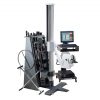
Clinician's Guide to Physical Therapy CPT Codes for Maximum Reimbursement
Treatment GuidelinesGet a detailed summary and reimbursement tips for CPT 97110: Therapeutic Exercise, CPT 97112: Therapeutic Procedure (stroke and non-stroke), and 97530 Therapeutic Activities.
Getting paid shouldn’t feel like a puzzle. But for many physical therapists, understanding billing codes and navigating reimbursement rules can be overwhelming. Whether you’re a seasoned clinician or new to the profession, knowing how to properly use physical therapy CPT codes is key to maximizing revenue and staying compliant.
CPT Codes 101: Essential Basics for Practitioners
CPT codes represent procedures, while ICD-10 codes refer to diagnoses. Both work hand-in-hand on claims to justify medical necessity. For example, CPT 97110 (therapeutic exercise) paired with ICD-10 M25.511 (shoulder pain) communicates what you did and why. CPT codes can be either timed (based on the duration of service) or untimed (billed once per session, regardless of time). Understanding this difference is crucial for accurate billing and mastering physical therapy CPT codes.
Avoiding Reimbursement Claim Denials
Have insurance companies been denying your reimbursement claims? It can be frustrating, confusing, and certainly time-consuming to make corrections and resubmit a claim for reimbursement. If your claims repeatedly get denied, there are two most likely culprits: the CPT code itself and the documentation. It’s possible that the claim uses the incorrect code, or more likely, the documentation may be missing something.
Let’s take a look at the three most common CPT codes for Physical Therapy and Occupational Therapy: CPT 97110: Therapeutic Exercise, CPT 97112: Therapeutic Procedure, and CPT 97530: Therapeutic Activities. We’ll walk through how each one is used, how to properly document them, and how to apply the 8-minute rule for timed services. You’ll also learn how to reduce audit risk, improve coding accuracy, and ensure proper reimbursement of physical therapy services.
CPT 97110: Therapeutic Exercise
CPT code 97110 covers therapeutic exercises used to build strength, flexibility, range of motion, and endurance. It applies to one or more body parts and requires direct, one-on-one contact with a licensed professional.
Understanding the 8-Minute Rule
This is a timed CPT code, billed in 15-minute increments. To bill for one unit, you must deliver at least 8 minutes of service. Here’s a quick Medicare reference:
- 8–22 minutes = 1 unit
- 23–37 minutes = 2 units
- 38–52 minutes = 3 units
Example scenario: In a 30-minute session, you provide:
- 12 minutes of 97110
- 9 minutes of 97140
- 9 minutes of 97116
You’d bill 2 units: the two most time-intensive codes (97110 and 97140).
Avoid common mistakes:
- Counting overlapping time
- Rounding up to meet unit thresholds
- Applying the 8-minute rule to untimed services
CPT 97110 Documentation Requirements
Exercise’s Purpose to Achieve Specific Goals
Document the functional goal each exercise supports (e.g., improving shoulder range of motion to assist with dressing).
Volume of Exercise
Record sets, reps, resistance levels (e.g., % of 1RM or MVIC), and any post-exercise changes (e.g., reduced tightness).
For more documentation strategies, visit our 97110 CPT code guide.
Tools like PrimusRS help automate documentation, streamlining this whole process. The PrimusRS automatically measures exercise volume and work, and creates easy to read reports with all the data you need, saving you time and creating better outcomes for your clients and clinic.
CPT 97112: Therapeutic Procedure of Neuromuscular Re-education
CPT 97112 means “neuromuscular reeducation of movement, balance, coordination, kinesthetic sense, posture, and/or proprioception for sitting and/or standing activities.” It’s a hands-on, therapeutic procedure requiring direct one-on-one contact with a licensed professional.
CPT 97112 Documentation Requirements
Specific to documenting CPT 97112, you must include the body parts treated (specific muscles, joints) and along with the specific exercises and activities performed. This could include:
- Specific exercises or activities performed and for what purpose
- Neuromuscular reeducation of movement, balance, coordination, kinesthetic sense, and/or posture
- Proprioception for sitting and/or standing activities.
Exercise’s Purpose to Achieve Specific Goals
Document not just what was done—but why. Examples include exercises to improve gait stability, postural control, or coordination, especially in neurological or balance impairments.
Volume of Exercise
Include sets, reps, total session time, techniques used (PNF, Feldenkrais, Bobath), and equipment (BAPS boards, balance pads). Always connect activities to functional outcomes.
CPT 97112 for Non-stroke Patients
You’ll most often use CPT 97112 for stroke patients, but it does apply to many scenarios outside of stroke rehab. Some payers (more than others) may complicate this matter, but the fact is that neuromuscular is a broad category of diseases.
In addition to stroke, CPT 97112 also includes motor neuron diseases, disorders of motor nerve roots and peripheral nerves, neuromuscular transmission disorders, and muscle diseases. It can also play a significant role in outpatient orthopedic rehab.
Examples
- Proprioceptive Training: Guiding a patient through open-chain shoulder exercises with eyes closed to enhance proprioception and restore proper scapulohumeral rhythm.
- Pelvic Control Exercises: Teaching pelvic tilt, progressing to maintaining tilt during leg movement or single-leg balance with correct posture.
- Functional Movement Re-education: Tasks like lifting, bending, or reaching to improve coordination and strength for ADLs.
- Simulated Work Activities: Step-ups, reaching at different heights, or job-specific tasks to restore balance and neuromuscular control.
CPT 97530 Therapeutic Activities
CPT code 97530 requires dynamic activities to improve functional performance. This timed code requires direct one-on-one contact and is billed in 15-minute increments.
This type of treatment is specific to improving functional activities. For example, you would use CPT 97530 for people having difficulty with a certain ADL or sport, or deficits in mobility, strength, balance or coordination.
Examples
Therapeutic activities cover a wide range of functional tasks like bending, lifting, catching, pushing, pulling, throwing, squatting etc. An example of a therapeutic activity could be lifting a weighted object and placing it on the top shelf, which is mainly to strengthen overhead shoulder function.
For more details, see our guide on the 97530 CPT code.
Additional Essential CPT Codes for Rehab
Evaluation Codes:
CPT 97161-97163
Vary by complexity: low (97161), moderate (97162), high (97163). Base selection on time, history, and clinical decision-making.
CPT 97164/97168
Used for re-evaluations. Indicated with new findings, significant progress, or a change in plan of care.
Common Treatment Codes:
CPT 97140
Covers manual therapy (joint mobilization, soft tissue work). Documentation must support one-on-one contact.
CPT 97116
Used for gait training. Distinct from therapeutic exercise—emphasizes ambulation mechanics.
Key Modality Codes:
- 97010: Hot/cold packs (not typically reimbursed)
- 97012: Mechanical traction
- 97014: Electrical stimulation (unattended)
Higher Reimbursement With BTE
Treatment with a BTE system like the PrimusRS or Simulator II enhances both documentation and reimbursement for higher-value CPT codes. These systems simulate real-life functional activities—ranging from sports and ADLs to job-specific tasks—while breaking movements down to isolate and strengthen targeted muscle groups.
They enable therapists to deliver one-on-one, dynamic treatments like lifting, pushing, pulling, and even throwing motions, all while capturing objective data. Unlike traditional metrics like sets and reps, these systems measure exercise volume as work (force × distance), offering a more precise view of patient progress.
Critical Modifiers & Reimbursement Optimization
Modifiers are two-character codes added to CPT codes that clarify service details—such as if a procedure was altered, repeated, or performed separately—helping payers process claims accurately.
Essential Modifiers:
- GP: Required for all PT services
- 59: Use when procedures are distinct and separately identifiable
- KX: Indicates services exceed therapy cap but remain medically necessary
- X-modifiers (XE, XP, XS, XU): Alternatives to modifier 59 in specific cases
- CQ Modifier: Indicates when services are provided in whole or in part by a physical therapist assistant (PTA). Be cautious—if a PT treats a patient after PTA involvement and the CQ modifier remains applied in error, it could lead to reduced reimbursement or potential billing fraud depending on your EMR settings.
Reimbursement Rate Comparison:
Medicare’s 2024 fee schedule reimburses differently per code. For instance:
- 97530 – Therapeutic Activities: ~$40
- 97112 – Neuromuscular Reeducation: ~$33
- 97110 – Therapeutic Exercise: ~$30
- 97140 – Manual Therapy: ~$28
- 97116 – Gait Training: ~$27
To optimize revenue responsibly, select CPT codes that accurately reflect patient needs and service complexity. Providing the right care comes first; proper documentation and coding ensure you receive fair reimbursement for your valuable services. This supports excellent patient outcomes and sustainable operations.
Avoid Denied Claims
Your claims may be denied for reasons beyond CPT code selection. A full explanation would go far beyond the scope of this article, so let’s only focus on the basics. Your documentation should permit you to answer “Yes “to the following questions:
- Do the medical and treatment diagnoses support the need for the intervention?
- Have the problems/deficits been clearly defined and measured?
- Have the problems/deficits been related to impact on function?
- Are valid, standardized outcomes measures that relate to each deficit present? Have your established medical necessity for the specific treatment interventions?
- Is documentation adequate to support the need for skilled intervention?
- Do notes show progression and modification of treatment program?
Documentation Checklist
In order to have proper documentation, you must be proactive in your approach. Follow this checklist when reviewing your documentation:
- Establish diagnosis
- Use ICD10s that support the treatment intervention/s
- Be thorough in your evaluation, being sure to identify each problem. Clearly identify any deficits
- Relate problems to function; how the deficit limits functional activity/ies
- Develop an evidence-based plan of care that addresses each problem
- Establish measurable goals that are time based
- Use valid, standardized outcome measures that relate to the deficit for which the intervention is directed in order to document progress or lack thereof
- Establish medical necessity for specific treatment interventions
- Document need for skilled intervention; particularly for therapeutic exercise as it is assumed by payers that patients can be instructed in exercise program and then execute independently
- Prove your care is necessary for safe and effective treatment.
Avoid These Common Billing Errors
Top Denial Reasons:
- Using wrong code for service documented
- Missing treatment goals or insufficient documentation patterns
- Incorrect modifier use
Audit Red Flags:
- Overuse of 97110 or 97530 without a functional rationale
- Repetitive or vague notes
- Lack of documented medical necessity
Prevention Strategies:
- Schedule regular billing reviews
- Train all clinical staff in CPT documentation
- Use EMR or tech tools like BTE for compliance support
Payer-Specific Guidelines
To truly maximize reimbursement, it’s important to understand the unique requirements of each payer. Some non-federal insurers may not follow Medicare’s 8-minute rule, may cap total reimbursement per visit, or have different documentation standards. Always consult payer-specific guidelines so you can code efficiently, bill accurately, and ensure optimal reimbursement for every visit.
Streamline Your CPT Coding with Advanced Technology
Managing complex physical therapy CPT codes doesn’t have to be difficult. Advanced tools like BTE systems offer real-time insights, automate documentation, and support compliance—making billing easier and more accurate.
Janna Jacobs, PT, CHT, CEAS, CDP
Senior Clinical Research Specialist
BTE





